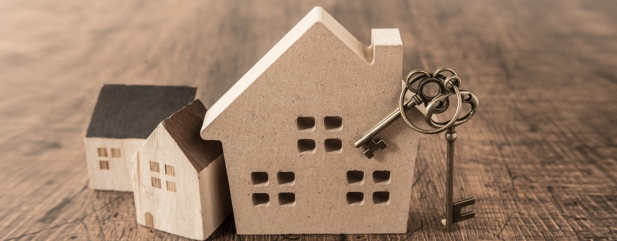Archived article
Please note that tax, investment, pension and ISA rules can change and the information and any views contained in this article may now be inaccurate.
New inheritance tax break could save you £140,000 – but how does it work?

A new Government tax break launched last year will ultimately mean that each couple can leave a £1m property in their estate entirely inheritance tax free. However, the rules around how the new tax-free allowance works are tricky, and homeowners could
be caught out.
We explain how the tax break works, and how not to fall foul of the rules.
WHAT’S THIS NEW INHERITANCE TAX BREAK?
Currently everyone can leave £325,000 of assets when they
die without having to pay any inheritance tax. Anything above this amount is subject to 40% tax.
The ‘residence nil rate band’, otherwise known as the family home allowance, is in addition to this allowance and came into effect in April 2017.
In the 2017/18 tax year it gave an extra £100,000 allowance, but this increases by £25,000 every year until 2020. This means for the current year it is worth £125,000, rising to £150,000 next April, and £175,000 the year after.
Per couple, this means you can ultimately save £140,000 in inheritance tax by using the new allowance.
WHEN DOES IT APPLY?
You only get the new allowance if you’re leaving your home as part of your estate. This property must be a home that you lived
in at some time, rather than a buy-to-let property.
If you own more than one home that you’ve lived in, the executor of your estate can pick which to use for the purposes of the family home allowance; it doesn’t have to be the one you’ve spent more time in.
One snag is that to be eligible your home must be left to your direct descendants, which the taxman classifies as your children, grandchildren, step-children, step-grandchildren or adopted children. However, the taxman has made it so that if your son or daughter inherit your estate along with their spouse, your estate can still claim the allowance.
If you have no children then you can’t make use of the allowance. For example, if you leave the property to your nieces or nephews, or siblings, you won’t get the family home allowance.
You also do not get the full tax break if your estate is worth £2m or more. For every £2 your estate is above this £2m limit, you lose £1 of the allowance. This means that in the current tax year, when the allowance is £150,000, you lose the entire thing if your estate is valued at £2.3m or more.
Anyone who has used trusts to leave their assets should recheck them too. If a property has been left to children or grandchildren using a discretionary trust, the estate will not benefit from the allowance, as the trust is the beneficiary, rather than the offspring.
CAN I TRANSFER IT TO MY SPOUSE?
The original £325,000 nil rate band can be transferred between spouses or civil partners. This means that when one half of the couple dies they can leave their estate to their husband or wife. When their partner dies their estate will not have to pay inheritance tax on £650,000 worth of assets.
The family home allowance works in the same way, meaning your partner’s estate can make use of your allowance. This is also the case if your spouse died before the family home allowance was introduced – your estate can still benefit from their unused allowance.
As HMRC says: ‘This can also be done if the first of the couple died before 6 April 2017, even though the additional threshold wasn’t available at that time.’
WHAT IF I DOWNSIZE MY PROPERTY LATER IN LIFE?
This is where the rules get a bit tricky. You don’t actually have
to own a property when you die to still benefit from the family home allowance.
If you have downsized to a smaller, and cheaper, property, or if you have sold your property to move into care or rented accommodation, your estate can still benefit from the extra tax break. In this situation individuals get an ‘inheritance tax credit’. This means they get the tax break equivalent to the value of their original home.
There are certain restrictions. You must have sold the property after 8 July 2015, and then calculate what percentage of the family home allowance your estate would have claimed had you still been resident there at the time of your death. This allowance can then be used
on death.
You also must leave both the lower-value property you moved to, if downsizing, and any remaining proceeds from the sale of the house to direct descendants.
Laura Suter, personal finance analyst, AJ Bell
Important information:
These articles are provided by Shares magazine which is published by AJ Bell Media, a part of AJ Bell. Shares is not written by AJ Bell.
Shares is provided for your general information and use and is not a personal recommendation to invest. It is not intended to be relied upon by you in making or not making any investment decisions. The investments referred to in these articles will not be suitable for all investors. If in doubt please seek appropriate independent financial advice.
Investors acting on the information in these articles do so at their own risk and AJ Bell Media and its staff do not accept liability for losses suffered by investors as a result of their investment decisions.

 magazine
magazine











